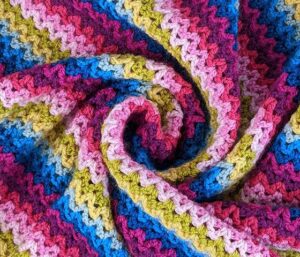Harriet’s blog- Nanny
Harriet says staying inside should not be your option when the chill sets in
W inter is with us, and nannying can seem much harder when the days are shorter, colder and often duller.
So what can nannies do with children in the winter to keep them entertained? You may be tempted to stay indoors more, to keep warm. But I believe there is no need. If you’re too cold outside, you’re either dressed inappropriately or you aren’t moving around enough!
It’s best to start the winter with a discussion with parents asking for wellies, coats, gloves and hats. A change of clothing is also a must (probably for yourself, as well as the children), unless you are lucky enough to have coveralls. Take lots of photos or videos whilst you’re out. That way you can show the parents why the children get so dirty. They’re learning!
So why spend time outside when it’s cold and damp? I believe that children have more freedom to learn and develop when they are outdoors, and that every aspect of the Early Years Foundation Stage can be covered, without them even realising it.
Take puddles, for example. You have two main options when traversing puddles with toddlers. You can think ; “Oh, no they’ll get wet and filthy,” or “My goodness – what an amazing learning opportunity”. I’m glad I chose the latter.
I remember the fascination all my minded children had with puddles and mud. I even remember the fun I had myself. Having children with me was like having permission to really explore all the sensations of touch, smell, sound, sight, and taste, though admittedly taste usually came by accident if I was talking too close to an enthusiastic puddle jumper. What better way to understand the world around them?
The obvious gain from puddle exploration is the physical development opportunities. Children will happily run and jump for ages if they have a convenient puddle to do it in. You may not think there is much opportunity for fine motor skills, but if you take a bucket with you, you can encourage children to pick out leaves, stones and sticks from the puddles. If you also show them how to swirl the water with a stick, or make patterns in the mud, you have the beginning of early handwriting skills.
Self-care can be promoted if you involve children in risk assessment. What do they need to wear if it’s wet and cold? What happens to their bodies if they don’t wear suitable clothing? What about food and drink? What is seasonal and healthy?
At home, when the water froze outside, the children were even more excited. They chipped, dug, carved, and collected. They measured, weighed, and transported. They watched it melt and re-freeze another day. The maths and science opportunities were huge. Other maths and science opportunities include counting puddles or icicles, finding out what materials float, making whirlpools with sticks and dropping things in to see what happens, seeing how long it takes to splash all the water out of a puddle, talking about different size puddles, snow balls or icicles, and looking at the effects of the wind on puddles.

When the grass in the garden (or park if if you don’t want your lawn ruined) gets really boggy, it’s an ideal time to take the ride-on-toys out. But surely the wheels will get stuck, I hear you cry! Yes, they do. That’s when you can sit back and watch them problem solve. Will they pull the tractor out and go around the puddle, or use planks of wood to help them go through?
Then, there are the language and communication opportunities. The puddles may be deep, shallow, muddy or icy. They can be squelchy, squashy, cold and squidgy. Why not make up songs or stories with the children about the mud, ice or snow? Don’t let the shorter days put you off going outside later on. The dark presents a good opportunity to develop listening skills. Provide torches for investigation and children can listen to their footsteps in water, or the rain falling. You can discuss how things look different in the darkness and have fun shining the torches on different surfaces to see if they are reflective.
If we do get snow, it will be a great opportunity for expressive art and design. Don’t stop at snowmen; help the children make snow scenes of their choosing and introduce small world toys to support their play. No snow? No problem; ice-sculpting, leaf-arranging, stick-drawings and collecting plants for table decorations and wreaths are all good ways for children to express themselves. If you’re really brave, let them use paintbrushes in the muddy puddles, then on a wall or fence.
Last but not least, are the opportunities to develop the personal, social and emotional aspects of children’s learning and development. Children will often admire their own reflection in water, and laugh as their reflection changes when the water ripples. Children have the space to make choices and take risks outdoors. In winter, only the risk assessment needs to change, not the access to nature. It is also good practice to talk to children about what they like or don’t like about winter, and how different weather makes them feel.
For some people, the winter is miserable, dark and cold. But it doesn’t have to be. I hope you enjoy this winter and teach children to enjoy it too. Make time to splash, squelch and slide.
I have yet to see a child jumping in a puddle without a grin on their face, or an adult for that matter!
Harriet X

